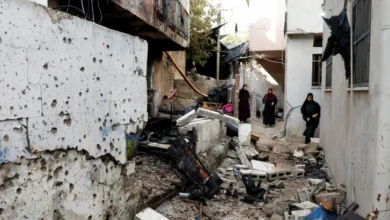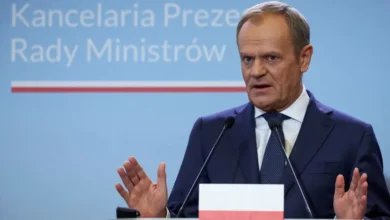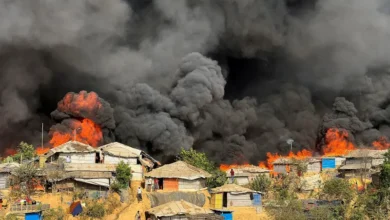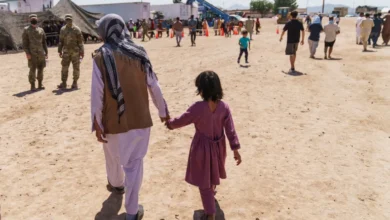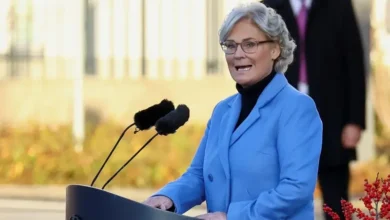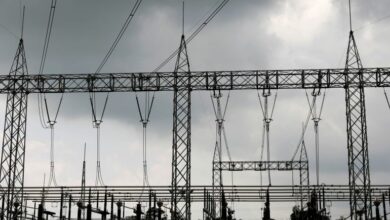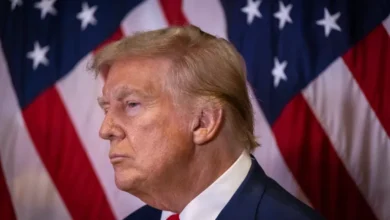Watching the watchdogs: The 5 Ds of US Middle East policy
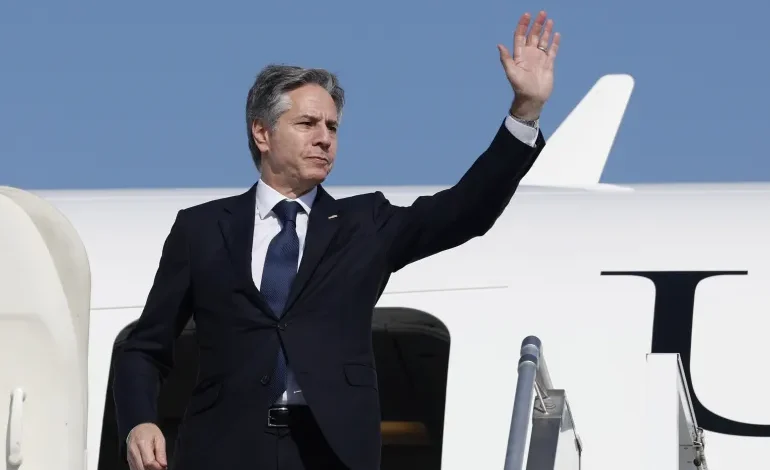
For 100 days now, Israel’s sustained genocidal war on Gaza has propelled the Middle East into new orbits of death, destruction, and ever-rising fears of greater mayhem to follow. The past 10 days brought us another recurring spectacle from the modern legacy of Arab-Israeli clashes: a regional tour by the United States secretary of state to “calm things down”.
In touring the region, Antony Blinken – we were told – had four aims: to reduce the drumbeats of an impending regional conflagration, increase humanitarian aid to Gaza as Palestinians are withering away under Israel’s starvation siege, reduce the number of Palestinians killed and injured by Israel’s genocidal daily bombing raids, and explore how political agreements after the fighting stops could launch negotiations for a stable, peaceful region.
This sounds noble and sensible – to the man on the moon perhaps. Few people on Earth who follow the Middle East and know its modern history believe the US’s stated aims. The crippling problem with Blinken’s efforts – and with how the US mainstream media cover them – is that almost every statement or goal he utters is contradicted by the impact of actual US policies in the Middle East, and every danger he seeks to curtail is usually caused or intensified by American militarism in the region.
To the people of the Middle East, Blinken, the fireman, looks more like the arsonist’s assistant. For his or any recent US secretary of state’s efforts are hobbled by the 5 Ds of Washington’s policies on Israel-Palestine and the region: delusion, denial, dishonesty, distortion, and diversion. All were on full display during Blinken’s tour.
Delusion describes well how the US projects its image as the selfless foreign power that comes to bring calm and brotherhood to the Middle East region, all while fuelling and prolonging violence and conflict.
The US has contributed heavily to the region’s rampant warfare, increasing poverty, and state fragility by carrying out military operations and maintaining a military presence there; using sanctions and threats against indigenous powers that defy it; supporting Israeli settler-colonialism that has now run amok in a genocidal spree in Gaza and the West Bank; and fortifying Arab autocrats who have immunised the Arab people against democracy and human rights.
The official delusions are faithfully conveyed to the public by the US mainstream media. A January 4 news report, for example, quoted the Department of State spokesperson Matthew Miller as saying: “There are obviously tough issues facing the region and difficult choices ahead. But the secretary believes it is the responsibility of the United States of America to lead diplomatic efforts to tackle those challenges head on, and he’s prepared to do that in the days to come.”
Better journalism could have clarified that the US had played a key role in creating “the tough challenges”.
Denial describes well the US rhetoric about the circumstances that fuel a wider conflict in the region. This violent confrontation has been building up for three decades very much due to Arab-Iranian reactions to two chronic American policies: support for Israel’s subjugation of Palestinians and the suppression of Arab movements that resist US-Israeli domination.
These resistance forces now militarily engage Israeli and American troops in Gaza, the West Bank, Lebanon, Yemen, Iraq, and Syria, but the epicentre of the expanding regional confrontation remains the Zionist-Palestinian conflict. If the US genuinely wants to prevent a wider conflict, it can do so right now by supporting a ceasefire in Gaza.It is not only not doing so, but it is in fact escalating the situation. Shortly after Blinken’s “peace-seeking” tour ended, the US and its allies carried out air raids of their own against Yemen. Yet US media widely quoted official statements and US officials that insisted “they were not seeking an escalation” and “their aim remains to de-escalate tensions”. Air bombardment hardly constitutes a de-escalation, especially when a Gaza ceasefire could actually do that instantly.
Dishonesty describes well Washington’s statements over the last half century about working for peace by creating a Palestinian state alongside Israel – when the US has actually funded Israel’s military dominance of the region, its slow and now active genocide against Palestinians, and the colonisation and theft of Palestinian lands for new Jewish settlements that have been growing since 1967.
If actions speak louder than words, the US has been screaming for 50 years that it aims to prevent the emergence of a Palestinian state. And yet, US media outlets continue to report today that there is a “significant divide” between the US and Israel over the two-state solution. But there is no disagreement here, the two have very much reached a consensus that Palestinians do not deserve self-determination.
Distortion describes well how the US says its recent military build-up in the region aims to deter the Gaza war expanding, and Iran and Hezbollah from threatening Israel – while US militarism since the 1950s has primarily maintained a frozen Cold War regional order to its liking.
This has allowed Israel to do whatever it wishes; kept most autocratic Arab governments dependent on US security and economic assistance to survive; and suppressed democratic aspirations and movements for socioeconomic justice in Arab states.
This context is usually absent from reporting in US media, where instead the US is presented as striking a “delicate balance” in the Middle East and seeking “regional security”.

